Change is a natural, inevitable part of life – every day we have to adapt to changing circumstances. This is just as true for our professional lives, and being adaptable in the workplace is a skill often highly prized by employers.
In today’s business world, the pace of change has accelerated. Disruptors such as the global pandemic have forced companies and employees to adapt to change rapidly, or disappear.
Before the pandemic, few Australians had taken up the offer of flexible work arrangements, despite the technology enabling this possibility being available. As of 2019, less than 10% of employees had a formal flexible work arrangement. Once pandemic restrictions and lockdowns were in place, businesses had no choice but to rapidly adapt to work from home arrangements for the vast number of employees.
What is adaptability in the workplace?
In the workplace, adaptability refers to the ability to handle change. In other words, it is a systematic process for ensuring that an organisation can respond adequately and quickly to changing environments. This includes changes to structure, operations, digital tools, and the workplace.
An excellent example of this is the shift from on-premise to remote work during ongoing government restrictions and lockdowns across the country, and indeed around the globe. Employees were asked to rapidly adapt to new work situations, while businesses swiftly scaled up and accelerated the adoption of cloud technologies and services.
It is incredibly valuable to have employees with adaptability skills in the workplace. They can be flexible when it comes to new and challenging situations, to enable businesses to progress and grow stronger. Adaptable employees can be relied on to use their initiative, learn new skills, ask questions, problem-solve, and think outside the box.
New challenges will always arise, but it is how those problems are dealt with that makes the difference, whether it is a change of management, personal responsibility, or work environment.
What does workforce adaptability look like?
The pandemic has given us one of the most recent examples of adaptability in the workplace. Within a very short space of time, employees were working from home and employers were scrambling to enable their workforce to stay connected and productive.
As we shift to a post-pandemic world, many businesses are embracing the digital workplace and need to be prepared to support employees whether they work remotely or in the office.
Balancing flexibility with productivity is not an easy task, but with digital technologies, businesses can empower their workforce to be more efficient with communication, collaboration, and performance.
Consider how your employees will be returning to work in the future, to support those returning to work in the office and those who will work remotely, either some or all of the time.
A key component of developing workplace flexibility is creating an in-office environment, even when employees are outside the office. Your employees can easily and securely access the tools and apps they need to function efficiently can be achieved with cloud computing technology, such as Microsoft 365 or Azure Virtual Desktop.
Traditional workplace environments are made up of hardware and rigid operating models that don’t allow much room for scale and flexibility. Technologies available across Azure and Microsoft 365 allow collaboration hubs that can be utilised by team members, regardless of where they are located. For example, Microsoft Teams offers the ability to communicate and communicate in one place, so team members can share files, conference, or chat with colleagues in real-time. SharePoint empowers teamwork, by allowing content to be stored and shared seamlessly across the business.
An important factor to consider is the security of your business, as employees working from anywhere and on any devices is by far one of the biggest concerns for organisations moving towards a hybrid workplace model. The technology utilised to enable the modern workplace should ensure security solutions include preventative protection, as well as conditional access, security analytics, and real-time threat intelligence.
A final word on the modern workplace
Business leaders are forging new ways to develop agile working environments, and need to consider how to support employees working in various locations, either in or outside the office space, or a combination of both. At the heart of this is creating a flexible and agile space for your workforce, with the right tools and technologies to boost their performance and drive business success.
Companies have learned how agile and flexible they can be, as they adapt to new conditions of work. The adoption of collaboration tools and cloud-based solutions has proved to be successful and effective, and the resilience of the workforce in recent years shows that in most cases employees are more than capable of adapting to their situation and maintaining or improving productivity.
Empower your employees to adapt to working from anywhere, within your company or externally – or both. The modern workplace consultants at Linktech Australia can help your organisation create an adaptable environment for all your employees.
